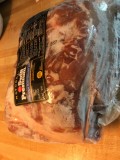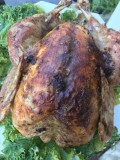How to Roast a Chicken for Several Meals
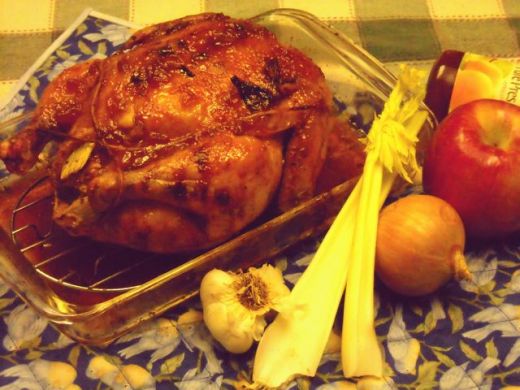
Chicken is one of the most versatile and healthful meats you can use in your recipes.
It is high in protein, economical, low in fat (when properly skinned and trimmed), and it can be used in a wide variety of of ethnic and specialty dishes.
Almost every culture has a signature dish that can be made with chicken. Chicken and Dumplings, Coq au Vin, Chicken Tandoori, Southern Fried Chicken, Chicken Chow Mien . . . and dozens of other dishes from Mexico to Thailand all have their special tastes and touches.
A roasting chicken from the supermarket is often a good bargain. When on sale you can get a five pound bird for about five dollars, and make several meals out of it.
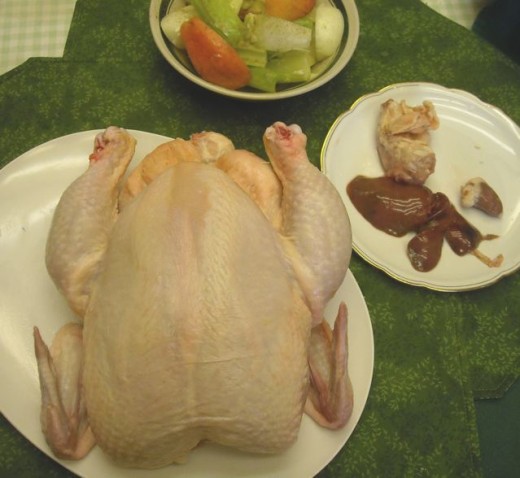
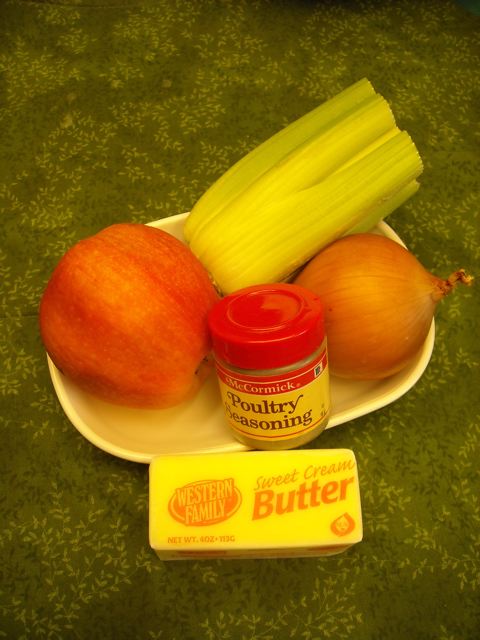
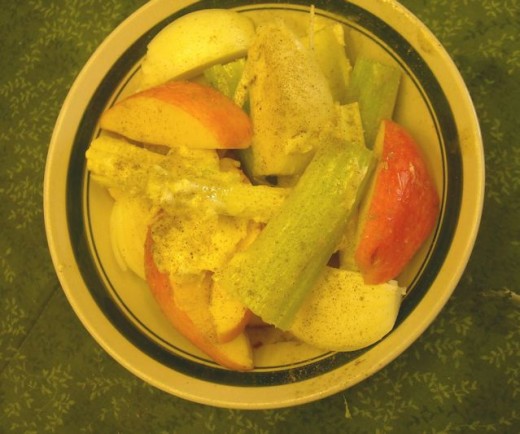
Seasoning the Bird
Here is a simple way to season the chicken.
Cut up a cored apple, a small onion, and a couple of stalks of celery. Pour a little melted butter or olive oil over these combined ingredients and sprinkle with about a teaspoon of poultry seasoning.
Olive oil may be used, but butter will help brown the chicken more.
Place a few pieces of apple, onion and celery inside the body and neck cavities. Do not stuff tightly. Just a few pieces will give flavor and help retain moisture.
If you do decide to make a traditional bread stuffing, you will need to cook the bird a little longer, and test for doneness.
You may want to vary the seasonings to your own taste -- for instance, you could use lemon, garlic and rosemary-- use fresh herbs if you have them.
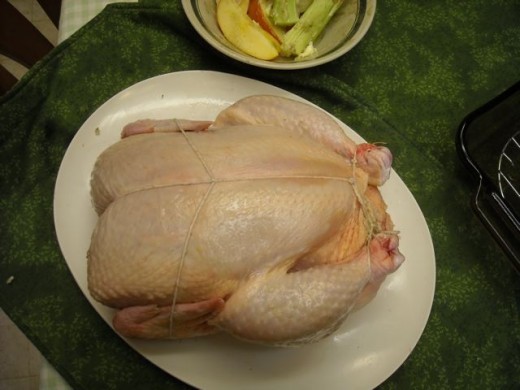
Truss Your Chicken
Use 100% cotton string to tie up your chicken into a neat package. Cotton string will not impart any flavor or chemicals. Do not use any string that has polyester or any other synthetic components.
You want to tie the bird so the legs and wings are close to the body, for more even cooking.
Tying the bird in the manner shown will also give you a place to tuck in extra pieces of onion and celery or herbs such as rosemary sage or thyme. Tying in this manner also keeps the inside ingredients from escaping
The string also gives you an easy way to handle, move or turn the bird while roasting.
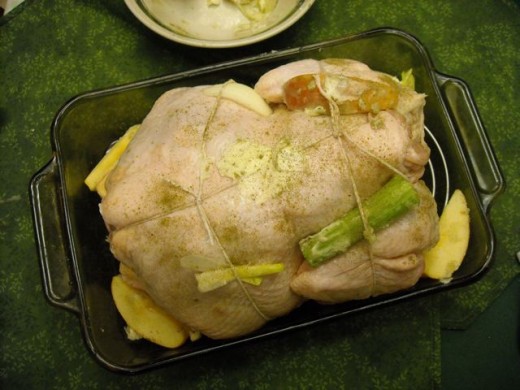
Roast Chicken Upside-Down First
I usually start roasting the chicken breast side down at 425 F for about 15 to 20 minutes or until the skin is slightly browned. Position a low rack in your roasting pan. Sprinkle a little seasoning on the chicken with a pat of butter, and tuck in some onion, apple and celery pieces around before sticking it in your preheated oven, breast down.
There are two reasons for this:
1. The back, or underside of the chicken gets completely cooked. Roasting breast side up, sometimes leaves the back underdone.
2. The breast meat is less likely to dry out, as the juices run down toward the leaner white breast meat, self basting it.
Browned on the Underside
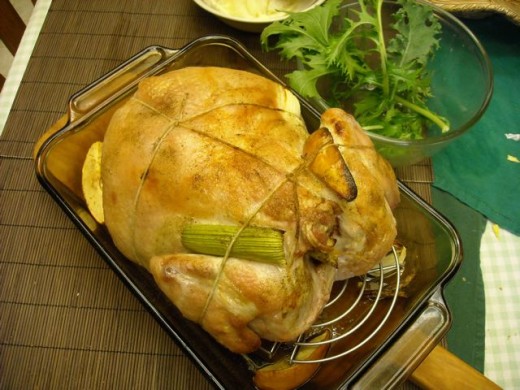
Once it is browned nicely on the bottom, you want to take it out of the oven and turn it over.
You can use a clean towel or potholders to do the turning. You will see that it the breast side is slightly deformed by the rack, but the final right-side-up roasting makes that disappear.
This usually takes an additional 45 minutes depending upon your oven. I like to slow roast at a slightly lower temperature than recommended in many recipes -- perhaps 375 F. It depends on how much time I have, but I think slightly longer at a lower temp gives a more tender result.
The breast meat is starting to cook. It will brown as it finishes.
Halfway Done and Turned Breast Side Up
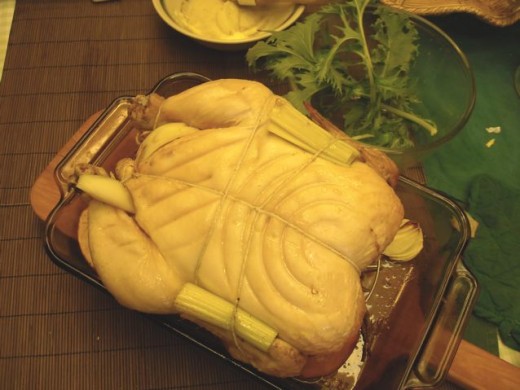
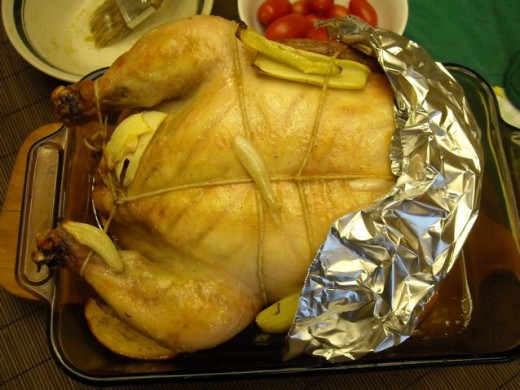
Not Quite Done Yet
If you see that the ends of the legs or other parts are browning much faster, or drying out , you can "tent" those parts with small pieces of alumininum foil.
The best way to tell if the chicken is done is to insert an instant read meat thermometer into the thickest part of the meat without touching a bone. The bones will be hotter and give an incorrect reading. A digital thermometer will give an instant reading and assure you that the meat is perfectly done and safe to eat.
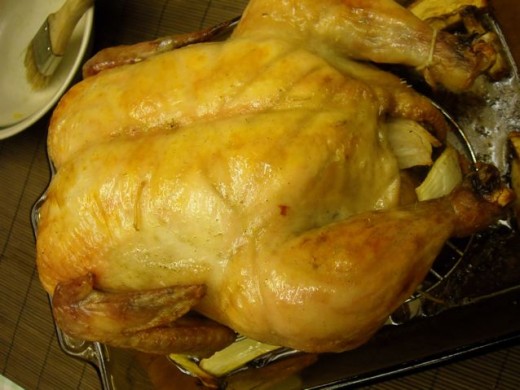
This chicken looks a little underdone, but could be browned more by brushing on a little melted butter, fruit jam or soy sauce. You do not want your chicken to be undercooked but you also do not want it to be dry and tough.
When your digital thermometer confirms doneness, remove the chicken from the oven, cut and remove the strings. And let it sit in a warm place for a few minutes before cutting.
Remember to let your roasted chicken rest for about 15 minutes before cutting it up, so the tasty juices are reabsorbed into the meat. You can put a piece of foil loosely over the top if you think it is cooling too fast on the surface, but it will remain hot on the inside -- actually still 'cooking'-- for a few minutes. This an important part of the process.
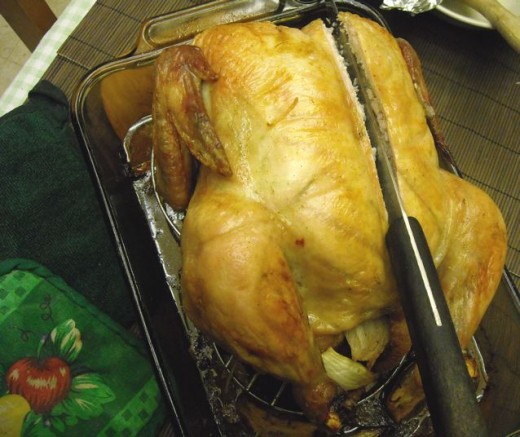
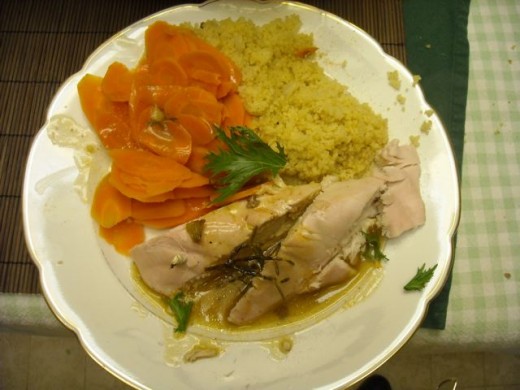
If you are cooking for two or three people, a roast chicken provides a lot of meat. You might want to serve breast slices for one meal. (There might be enough left for a sandwich or two the next day/). The legs and thighs might be put away for another dinner.
The bits and pieces for the rest of the carcass can go into a casserole, enchilatas or a stir fry.
The carcass and the seasoning vegetables (as well as the neck and giblets that were removed during first preparation) can be simmered to make a beautiful broth or soup.




